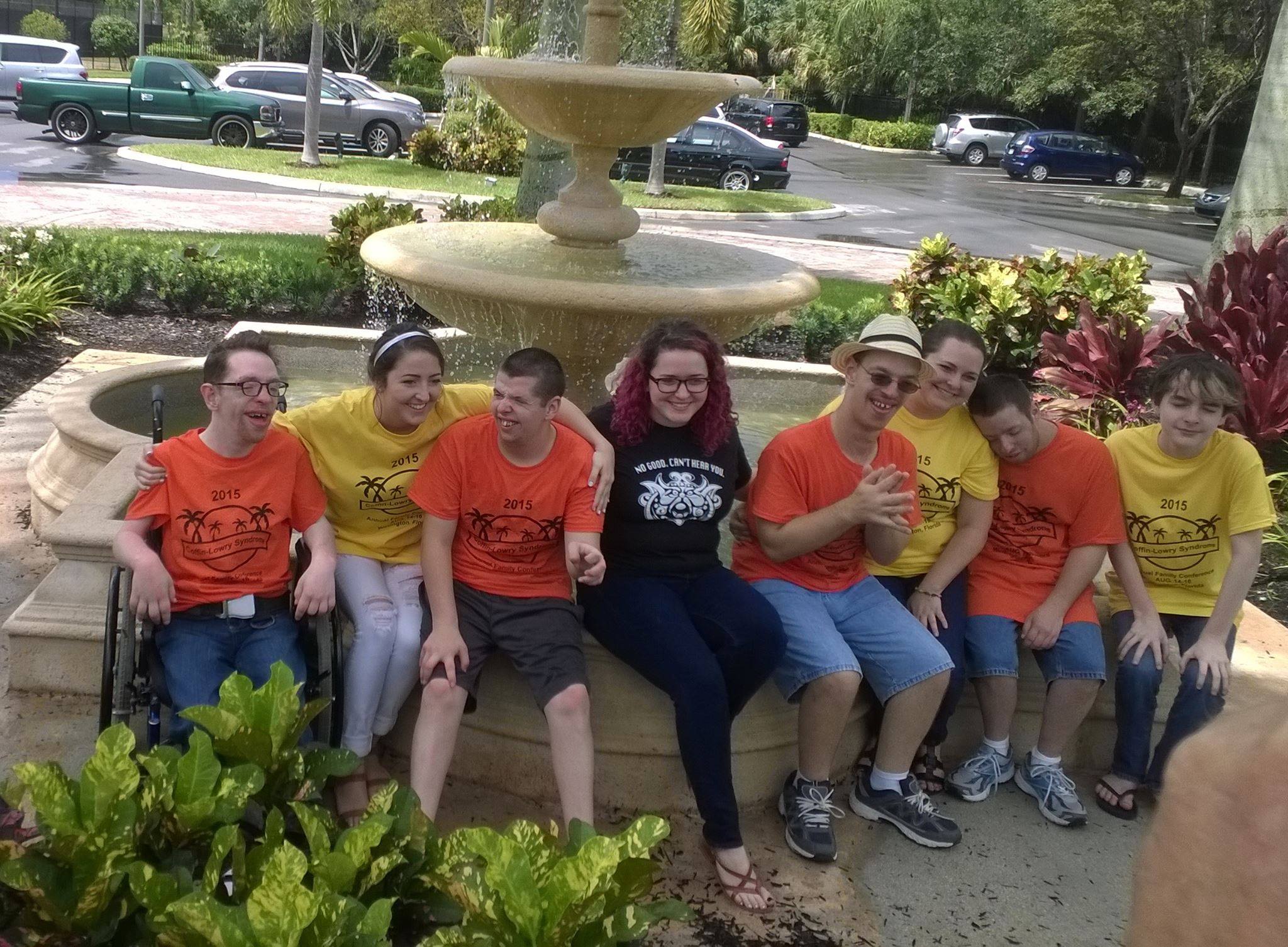Frequently Asked Questions


The exact incidence is not known, but CLS is rare. Scientists estimate that it affects 1 in 50,000 to 1 in 100,000 births. [1]
Some aspects of the syndrome are progressive. Facial coarsening and skeletal involvement become more pronounced with age. Some motor and coordination neurological problems do not express themselves until later in childhood and may result in decreased mobility. Bone degeneration may occur starting in the late teen years which can lead to a higher incidence of broken bones. This is especially problematic for those who also have drop episodes as they are prone to spine and neck injuries from the repeated falls. Depression or behavior problems may develop. Life expectancy may be reduced in individuals who have severe cardiac problems, respiratory complications, or severe progressive kyphoscoliosis.
There is wide variability in abilities and characteristics. Early intervention, physical and speech therapies plus the child’s own genetic makeup are all factors. Even among the severely affected, most will learn to speak and are able to be toilet trained. If sensorineural deafness is present, then expressive communication may still be possible through sign language.
Note: The following information is based on Parents Perspectives
Walking: Usually somewhere around 2-3 years. Many children have a more or less normal gait with mild coordination and balance issues. In some cases, walking may appear normal if unsteady for the first few years, and then somewhere between ages 4-7, the child’s gait may slowly change to a more wide-stanced gait, knees somewhat bent. Sometimes the left leg will drag behind the right. Often this so-called “ataxic” gait is associated with drop episodes, and the two characteristics will emerge about the same time. Both are most likely neurological in origin.
Speech: Speech is always impaired to some degree. Some acquire substantial oral communication, whereas a minority, especially in those with hearing impairment, never speak. A few basic sounds emerge between birth and 4 years, then between 4-6 years, 2-3 word short sentences usually emerge. Speech will continue to evolve and grow slowly over many years. Most can generally be understood even by strangers. Despite the limited verbal abilities, the communications skills are good. They usually understand (receptive language) much better than they can speak (expressive language) so their understanding is often underestimated.
Toilet Training: Most children with intellectual disabilities can be toilet trained by age 7, including Coffin-Lowry children. Watch for the normal signs of readiness: awareness that they have soiled, and a desire to be changed. As with all other things, toilet training will take longer with CLS children. Children need to be able to follow at least 5 actions in sequence to be toilet trained, so they may need assistance for some years. Some are never toilet trained. Watch for constipation, which is very common due to low muscle tone and inactivity and can lead to painful and dangerous bowel blockages. Constipation is common for people with CLS.
Self-Care: Many will eventually learn to handle their own personal hygiene and dress themselves, but some may always have trouble with fasteners such as buttons or tying the laces of their shoes. Pull-on pants, pull-over tops, and shoes with Velcro closures are wonderful for this and help give them a sense of independence and accomplishment.
Reading/Writing/Math: This varies a great deal by individual; writing is dependent on their fine motor control. Many will learn a few simple words – their name, the names of their family members, etc. Some do not learn to read or write at all. They tend to have very good memories.
Social/Emotional: Developmentally, this is the area least affected. Most Coffin-Lowry individuals are capable of a full range of emotions, and tend to be very friendly, cheerful and loving. A minority exhibit behavior issues.
There is no “cure” for Coffin-Lowry Syndrome. However, specific symptoms, developmental delays and behaviors can be treated or addressed. A developmental evaluation should be done to determine if delays exist. Your physician can refer you to a center in your area serving developmentally disabled children, associations for intellectually disabled citizens, and in the special education departments of local school districts. If delays are noted, the child should be enrolled in an appropriate setting answering his specific needs. This often requires a “team approach” that includes physician, speech and language therapy, occupational therapy, physical therapy and vocational training. As with all children, early mental stimulation is important for brain development and especially so for children with CLS.
Your child should have regular medical examinations to watch his or her progress. Since you see your child every day, you may notice that something is different before your family doctor will. In CLS, scoliosis may be present as early as birth or as late as the teenage years, with the average being early grade school years. Unexplained falls may develop which are neurological in origin and may be controlled with various medications. Sleep apnea is common and if untreated, the chronic oxygen deprivation can cause cardiac problems and loss of cognitive function. Fainting spells could be an indicator of a heart condition. If behavior problems occur, first rule out any underlying physical cause; for example, head banging may be an indication that the child is in discomfort from chronic ear infections.
The following specialty care should be considered:
- Cardiac studies to begin during childhood
- Repeated every 5-10 years
- Monitor for the development of progressive scoliosis/kyphoscoliosis
- Intervention to prevent progression as appropriate
- Monitor for potential Sleep Apnea
- Regular Hearing and Vision screenings
- Regular Dental Care
- Annual General Practitioner examinations/lab work to ensure good health
- Neurologist Specialty examinations for behavior, seizure and/or Drop Attacks/Stimulus-Induced Drop Episodes (SIDEs) management
- Allows early intervention to minimize occurrence of triggering stimuli
- Antiepileptic and behavioral management medication may be need
- Social resources may be desired to support individuals with CLS
The following characteristics should be suspicion for narrowing of spinal canal or spinal cord compression injury:
- Abnormal gait
- Bowel/bladder habits
- Expression of pain
- Neurological changes
- Abnormal tendon reflexes
Remember to “care for the caregiver.” Care of special needs children may place great strain on any family and dwelling on the future may be overwhelming at times. Remember to take one day at a time, do what you can, and live your life. Take advantage of any and all social services at your disposal. Look into respite care. Reach out to other CLS families who are going through similar situations.

The Coffin-Lowry Syndrome Foundation runs a private Facebook group with over 500 members impacted by CLS and from 37 countries in the world. Join now and connect with others like you in our online community of families impacted by CLS to seek and provide support, ask questions, find resources, and learn how to advocate.
Parents who are members of the online closed/private support forum (Coffin-Lowry Syndrome Foundation Facebook group) report that just being able to talk to other CLS families who know exactly what they are going through is extremely helpful.
References
[1] https://my.clevelandclinic.org/health/diseases/24114-coffin-lowry-syndrome, Sep 2022